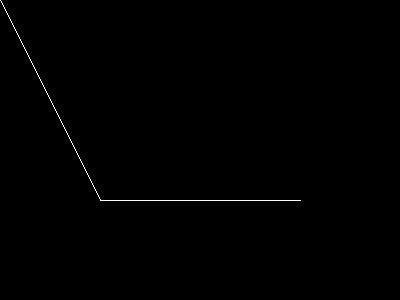In case you want to use an open polygon but are stuck with a PHP version prior to 7.2, a solution may be to 'backplot' your array to its original start. Say you have an array of pixels (below seperated by commas)
<?php
$arr = array();
for ($i = 0; $i < count($pixels); $i++) {
$pixel = explode(',', $pixels[$i]);
if (($pixel[0] > 0) && ($pixel[1] > 0)) {
$arr[] = $pixel[0];
$arr[] = $pixel[1];
}
}
imagepolygon($im, $arr, (count($arr) / 2), $otcolor);
?>
you can replace this by something like
<?php
$arr = array();
for ($i = 0; $i < count($pixels); $i++) {
$pixel = explode(',', $pixels[$i]);
$arr[] = $pixel[0];
$arr[] = $pixel[1];
}
// imageopenpolygon($im, $arr, (count($arr) / 2), $otcolor) is not possible, so...
for ($i = (count($pixels)-1); $i >= 0; $i--) {
$pixel = explode(',', $pixels[$i]);
$arr[] = $pixel[0];
$arr[] = $pixel[1];
}
imagepolygon($im, $arr, (count($arr) / 2), $otcolor);
?>imageopenpolygon
(PHP 7 >= 7.2.0, PHP 8)
imageopenpolygon — Dessine un polygone ouvert
Description
Signature à partir de PHP 8.0.0 (non supportée avec les arguments nommés)
Signature alternative (obsolète à partir de PHP 8.1.0)
imageopenpolygon() dessine un polygone ouvert sur
l'image. Contrairement à imagepolygon(),
aucune ligne est dessiné entre le dernier et le premier point.
Liste de paramètres
imageUn objet GdImage, retournée par une des fonctions de création d'images, comme imagecreatetruecolor().
points-
Un tableau contenant les sommets du polygone, par exemple :
points[0] = x0 points[1] = y0 points[2] = x1 points[3] = y1 num_points-
Nombre total de points (sommets), qui doivent être d'au moins 3.
Si ce paramètre est omis conformément à la deuxième signature,pointsdoit avoir un nombre pair d'éléments, etnum_pointsest assumé d'êtrecount($points)/2. color-
Un identificateur de couleur créé avec imagecolorallocate().
Historique
| Version | Description |
|---|---|
| 8.1.0 |
Le paramètre num_points a été rendu obsolète.
|
| 8.0.0 |
image attend une instance de GdImage désormais;
auparavant, une resource gd était attendue.
|
Exemples
Exemple #1 Exemple avec imageopenpolygon()
<?php
// Create a blank image
$image = imagecreatetruecolor(400, 300);
// Allocate a color for the polygon
$col_poly = imagecolorallocate($image, 255, 255, 255);
// Draw the polygon
imageopenpolygon($image, array(
0, 0,
100, 200,
300, 200
),
3,
$col_poly);
// Output the picture to the browser
header('Content-type: image/png');
imagepng($image);
imagedestroy($image);
?>Résultat de l'exemple ci-dessus est similaire à :

Voir aussi
- imagepolygon() - Dessine un polygone